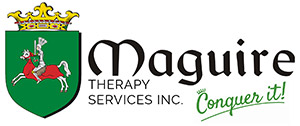Whenever you pair good nutrition with physical therapy, it’s a duo unlike any other. However, many people know that good nutrition is the pathway to good health. Good nutrition is a simple and powerful way to help with those aches and pains.
How Nutrition Can Help Physical Therapy
Nutritional interventions are alone useful tools to improve overall health outcomes in patients, and specifically reduce inflammation. Low-grade inflammation and oxidative stress underlie chronic osteoarthritis. Patients with poor nutrition habits who undergo physical therapy may notice a decrease in pain within as little as 4 days with the right diet.
You will not only notice a decrease in inflammation, but also a decrease in edema, an improved metabolic profile, a decrease of nociception, and improvements in function. When you combine nutrition with therapeutic exercise it is a powerful combination that sets you up for success and with this valuable health skill.”
“A systematic review and meta-analysis in the 2017 European Journal of Nutrition found that a Mediterranean-style eating pattern exerts a protective effect on the risk of cardiovascular disease, and is associated with smaller gains in BMI and waist circumference.
You would be surprised to find out that many still are unaware of the relationship between a healthy body and good eating habits. The benefits of this lifestyle have been proven time and time again as an efficient and surgery and prescription free way of treatment. Osteoarthritis is a condition that affects multiple parts of the body, wearing down cartilage at the ends of bones causing them to rub against each other. It’s the most common form of arthritis and millions of people struggle with it every day.
According to a study conducted in 2014, evidence collected during it suggested that patients with Osteoarthritis benefited from an improved diet and exercise, helping to alleviate the pain in overweight and obese patients.
Healthier living should always begin with physical therapy, people who can recommend the right steps and directions to take to help you achieve a healthier body. This can include them giving you the tools and advice you need or a referral to a dietitian or someone else who can help.
How Nutrition Can Help You And Your Physical Therapist
Every physical therapist knows that nutrition plays a critical role in the healing process from musculoskeletal injury. The phases of healing include inflammation, proliferation, and remodeling. It’s also important to remember that excess inflammation will cause cell damage to previously healthy tissue.
To take control of inflammation, a physical therapist will advise that patients increase consumption of omega-3. In particular, there are two crucial ones — EPA (Eicosapentaenoic acid) and DHA (Docosahexaenoic acid) — which are primarily found in certain fish. Both of these fatty acids are key components in maintaining a healthy body. EPA especially, as it helps the body synthesize the chemicals which play major roles in inflammation and blood clotting.
ALA (alpha-linolenic acid), another omega-3 fatty acid, is found in plant sources such as nuts and seeds. This nutrient can be found in avocado, almonds, fish oil, olive oil, and pecans. A physical therapist will also advise you to incorporate fruits and vegetables into your diet. That’s because these foods are rich in antioxidants and contain pro-inflammatory cytokines.
The phases of proliferation and remodeling are centered on stopping the process of atrophy before it begins and enhancing soft tissue repair. Musculoskeletal injuries are related to the inability of muscles to synthesize protein. As a result, strength is decreased. Incorporating protein into your diet will help prevent muscle atrophy. A physical therapist is a good resource to learn more about good nutrition.
Although a physical therapist is a movement specialist, a physical therapist can provide basic food nutrition information to help you make healthier lifestyle choices. A physical therapist can help you develop an individualized nutrition plan. It’s part of their holistic treatment plan.
Most people see a physical therapist for pain without realizing that good nutrition can help alleviate their pain. For example, it has been found that good nutrition combined with physical therapy has helped patients with osteoarthritis, neuropathy, spinal pain, fibromyalgia, complex regional pain syndrome, and more. Good nutrition is always part of a physical therapist’s treatment plan, and it is effective.
What You Need To Know
If you’re seeing a physical therapist, let them know about your daily diet. They’re there to help and will educate you about what foods you should and shouldn’t eat, and give advice on what foods are important for healing and decreasing pain. And guess what? You won’t have to eliminate taste for nutrition. There are plenty of tasty foods that are healthy for you to enjoy, you just have to know who to ask.
Sources:
- http://www.apta.org/Blogs/Pulse/2018/8/PTNutritionPower/
- https://www.ncbi.nlm.nih.gov/pmc/articles/PMC4273714/
- https://www.integrativepainscienceinstitute.com/can-pts-give-nutrition-advice-what-the-law-says-about-physical-therapists-providing-nutrition/
Tags: health and wellness, physical therapy, nutrition, natural pain relief, natural treatment, healthy tips, Maguire Therapy Services


